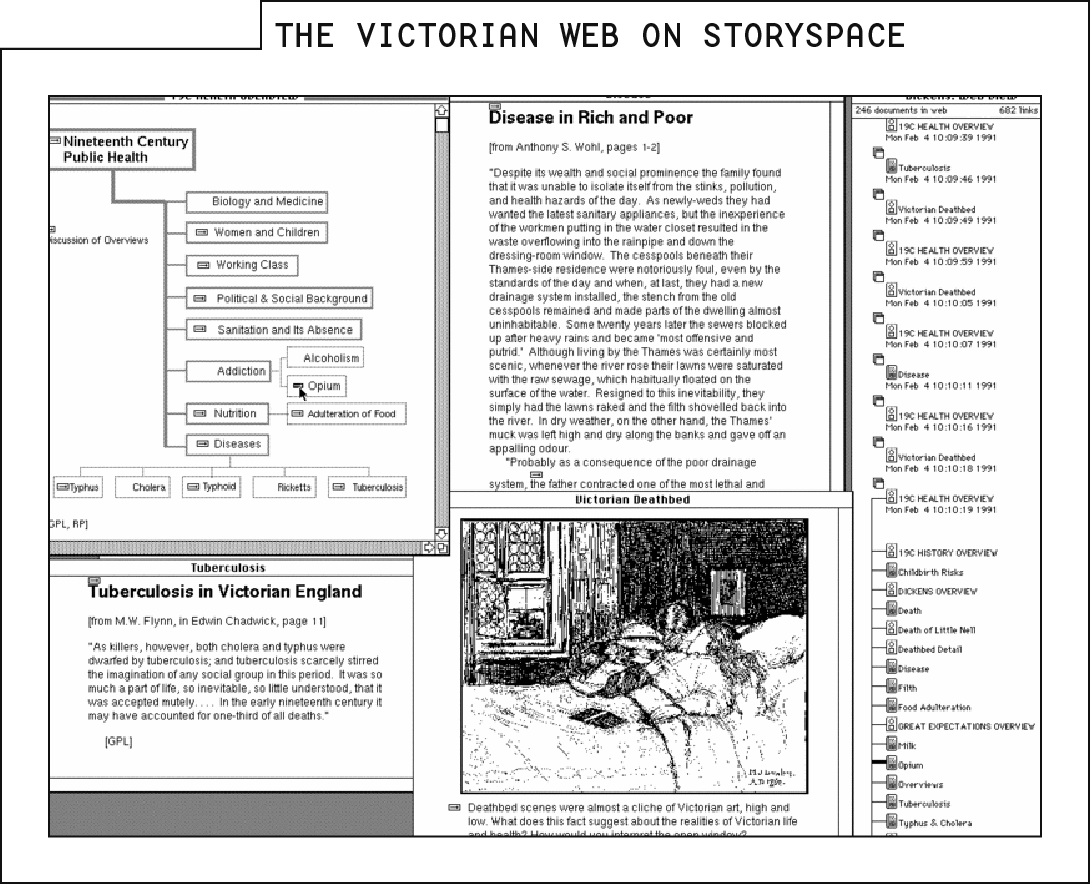Screens, Research and Hypertext
Powered by 🌱Roam GardenHypertext That Was
I learned about hypertext from the Victorians. (Sort of.)
My PhD work was on the moral and political philosophy of John Stuart Mill, the preeminent English philosopher of the early-to-mid Victorian era. To understand Mill was to grapple with British intellectual life of the middle of the 19th Century. It was to immerse yourself in the fiction of Dickens and Hardy, to grapple with the overt racism of Carlyle and Tennyson, to engage with the pedagogy of Arnold and the aesthetics of Ruskin.
In those early days of hypertext, the Victorian Web was an invaluable tool.
Originally an experiment in hypertext, the project encompassed around 1500 different hyperlinked texts, encoded into two then-competing, proprietary hypermedia systems — Intermedia and Storyspace.

In this screen capture, from the Storyspace version, the main text ("Disease in Rich and Poor") is located in the top center. A representative image (below) provides context, while a second text article (“Tuberculosis in Victorian England”) drills in to a specific disease that plagued (ha!) Victorian Britons. Diagrams show how the current topic relates to others on the web (left) and how the specific article relates to other articles in the web (right).
To put the point into more modern vocabulary: where the modern web focuses on the best way to display a single text, these earlier systems focused on providing a dashboard that highlights the relationship between a given text and the other elements in the collection.
For more context
Hypertext is much older than the web.
What to read next
The Victorian Web is still around, in all its early internet glory.
Other items of interest
The layout of this project was inspired by the Victorian Web.
The web isn't optimized for reading like a researcher.
Forget the internet. I want to hear more about Victorian political philosophy.
Referenced in
On the Sameness of Links
It hasn't always been that way. Some older hypertext systems showcased multiple link styles.
Screens, Research and Hypertext
Believe it or not, there was a whole world of hypertext applications years before the Web became the default way of creating links.